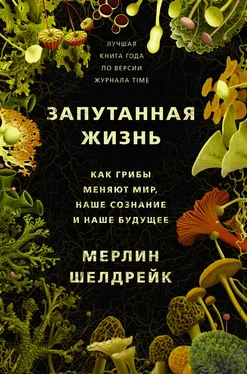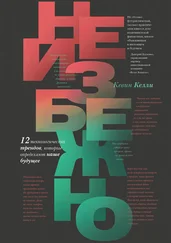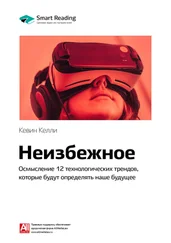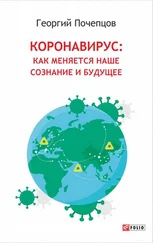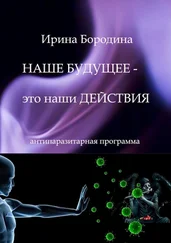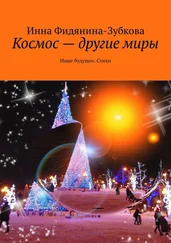Dupré J, Nicholson DJ. 2018. “A manifesto for a processual biology.” In Dupré J, Nicholson DJ, eds. Everything Flows: Towards a Processual Philosophy of Biology . Oxford, UK: Oxford University Press, pp. 3–48.
Dyke E. 2008. Psychedelic Psychiatry: LSD from Clinic to Campus . Baltimore, MD: The Johns Hopkins University Press.
Eason W, Newman E, Chuba P. 1991. Specificity of interplant cycling of phosphorus: The role of mycorrhizas. Plant and Soil 137: 267–74.
Elser J, Bennett E. 2011. A broken biogeochemical cycle. Nature : www.nature.com/articles/478029a [accessed October 29, 2019].
Eltz T, Zimmermann Y, Haftmann J, Twele R, Francke W, Quezada-Euan JJG, Lunau K. 2007. Enfleurage, lipid recycling and the origin of perfume collection in orchid bees. Proceedings of the Royal Society B 274: 2843–848.
Eme L, Spang A, Lombard J, Stairs CW, Ettema TJG. 2017. Archaea and the origin of eukaryotes. Nature Reviews Microbiology 15: 711–23.
Engelthaler DM, Casadevall A. 2019. On the Emergence of Cryptococcus gattii in the Pacific Northwest: ballast tanks, tsunamis, and black swans. mBio 10: e02193–19.
Ensminger PA. 2001. Life Under the Sun . New Haven, CT: Yale Scholarship Online.
Epstein S. 1995. The construction of lay expertise: AIDS activism and the forging of credibility in the reform of clinical trials. Science, Technology, Human Values 20: 408–37.
Erens H, Boudin M, Mees F, Mujinya B, Baert G, Strydonck M, Boeckx P, Ranst E. 2015. The age of large termite mounds – radiocarbon dating of Macrotermes falciger mounds of the Miombo woodland of Katanga, DR Congo. Palaeogeography, Palaeoclimatology, Palaeoecology 435: 265–71.
Espinosa-Valdemar R, Turpin-Marion S, Delfín-Alcalá I, Vázquez-Morillas A. 2011. Disposable diapers biodegradation by the fungus Pleurotus ostreatus. Waste Management 31: 1683–688.
Fairhead J, Leach M. 2003. “Termites, Society and Ecology: Perspectives from West Africa.” In Insects in Oral Literature and Traditions . Motte-Florac E, Thomas J, eds. Leuven, Belgium: Peeters.
Fairhead J, Scoones I. 2005. Local knowledge and the social shaping of soil investments: critical perspectives on the assessment of soil degradation in Africa. Land Use Policy 22: 33–41.
Fairhead JR. 2016. Termites, mud daubers and their earths: a multispecies approach to fertility and power in West Africa. Conservation and Society 14: 359–67.
Farahany NA, Greely HT, Hyman S, Koch C, Grady C, Pașca SP, Sestan N, Arlotta P, Bernat JL, Ting J, et al. 2018. The ethics of experimenting with human brain tissue. Nature 556: 429–32.
Fellbaum CR, Mensah JA, Cloos AJ, Strahan GE, Pfeffer PE, Kiers TE, Bücking H. 2014. Fungal nutrient allocation in common mycorrhizal networks is regulated by the carbon source strength of individual host plants. New Phytologist 203: 646–56.
Ferguson BA, Dreisbach T, Parks C, Filip G, Schmitt C. 2003. Coarse-scale population structure of pathogenic Armillaria species in a mixed-conifer forest in the Blue Mountains of northeast Oregon. Canadian Journal of Forest Research 33: 612–23.
Fernandez CW, Nguyen NH, Stefanski A, Han Y, Hobbie SE, Montgomery RA, Reich PB, Kennedy PG. 2017. Ectomycorrhizal fungal response to warming is linked to poor host performance at the boreal-temperate ecotone. Global Change Biology 23: 1598–609.
Ferreira, B., There’s growing evidence that the universe is connected by giant structures, Vice (2019), www.vice.com/en_us/article/zmj7pw/theres-growing-evidence-that-the-universe-is-connected-by-giant-structures [accessed 16 November 2019].
Field KJ, Cameron DD, Leake JR, Tille S, Bidartondo MI, Beerling DJ. 2012. Contrasting arbuscular mycorrhizal responses of vascular and non-vascular plants to a simulated Palaeozoic CO2 decline. Nature Communications 3: 835.
Field KJ, Leake JR, Tille S, Allinson KE, Rimington WR, Bidartondo MI, Beerling DJ, Cameron DD. 2015. From mycoheterotrophy to mutualism: mycorrhizal specificity and functioning in Ophioglossum vulgatum sporophytes. New Phytologist 205: 1492–502.
Fisher MC, Hawkins NJ, Sanglard D, Gurr SJ. 2018. Worldwide emergence of resistance to antifungal drugs challenges human health and food security. Science 360: 739–42.
Fisher MC, Henk DA, Briggs CJ, Brownstein JS, Madoff LC, McCraw SL, Gurr SJ. 2012. Emerging fungal threats to animal, plant and ecosystem health. Nature 484: 186–94.
Floudas D, Binder M, Riley R, Barry K, Blanchette RA, Henrissat B, Martínez AT, Otillar R, Spatafora JW, Yadav JS, et al. 2012. The Paleozoic origin of enzymatic lignin decomposition reconstructed from 31 fungal genomes. Science 336: 1715–719.
Foley JA, DeFries R, Asner GP, Barford C, Bonan G, Carpenter SR, Chapin SF, Coe MT, Daily GC, Gibbs HK, et al. 2005. Global consequences of land use. Science 309: 570–74.
Francis R, Read DJ. 1984. Direct transfer of carbon between plants connected by vesicular – arbuscular mycorrhizal mycelium. Nature 307: 53–56.
Frank AB. 2005. On the nutritional dependence of certain trees on root symbiosis with belowground fungi (an English translation of A. B. Frank’s classic paper of 1885). Mycorrhiza 15: 267–75.
Fredericksen MA, Zhang Y, Hazen ML, Loreto RG, Mangold CA, Chen DZ, Hughes DP. 2017. Three-dimensional visualization and a deep-learning model reveal complex fungal parasite networks in behaviorally manipulated ants. Proceedings of the National Academy of Sciences 114: 12590–595.
Fricker MD, Boddy L, Bebber DP. 2007a. “Network Organisation of Mycelial Fungi.” In Biology of the Fungal Cell . Howard RJ, Gow NAR, eds. Springer International Publishing, pp. 309–30.
Fricker MD, Heaton LL, Jones NS, Boddy L. 2017. The Mycelium as a Network. Microbiology Spectrum 5: FUNK-0033-2017.
Fricker MD, Lee J, Bebber D, Tlalka M, Hynes J, Darrah P, Watkinson S, Boddy L. 2008. Imaging complex nutrient dynamics in mycelial networks. Journal of Microscopy 231: 317–31.
Fricker MD, Tlalka M, Bebber D, Tagaki S, Watkinson SC, Darrah PR. 2007b. Fourier-based spatial mapping of oscillatory phenomena in fungi. Fungal Genetics and Biology 44: 1077–84.
Fries N. 1943. Untersuchungen über Sporenkeimung und Mycelentwicklung bodenbewohneneder Hymenomyceten. Symbolae Botanicae Upsaliensis 6: 633–664.
Fritts R. 2019. A new pesticide is all the buzz. Ars Technica : arstechnica.com/science/2019/10/now-available-in-the-us-a-pesticide-delivered-by-bees/ [accessed October 29, 2019].
Fröhlich-Nowoisky J, Pickersgill DA, Després VR, Pöschl U. 2009. High diversity of fungi in air particulate matter. Proceedings of the National Academy of Sciences 106: 12814–819.
Fukusawa Y, Savoury M, Boddy L. 2019. Ecological memory and relocation decisions in fungal mycelial networks: responses to quantity and location of new resources. The ISME Journal 10.1038/s41396-018-0189-7.
Galland P. 2014. The sporangiophore of Phycomyces blakesleeanus : a tool to investigate fungal gravireception and graviresponses. Plant Biology 16: 58–68.
Gavito ME, Jakobsen I, Mikkelsen TN, Mora F. 2019. Direct evidence for modulation of photosynthesis by an arbuscular mycorrhiza-induced carbon sink strength. New Phytologist 223: 896–907.
Geml J, Wagner MR. 2018. Out of sight, but no longer out of mind – towards an increased recognition of the role of soil microbes in plant speciation. New Phytologist 217: 965–67.
Giauque H, Hawkes CV. 2013. Climate affects symbiotic fungal endophyte diversity and performance. American Journal of Botany 100: 1435–444.
Читать дальше
Конец ознакомительного отрывка
Купить книгу
